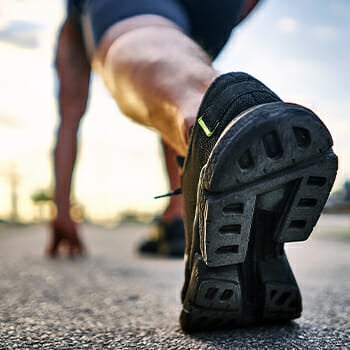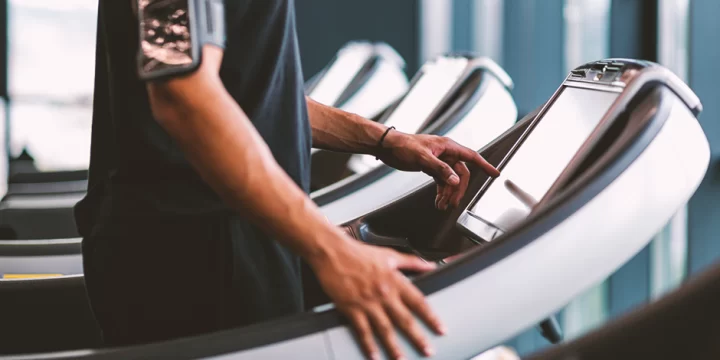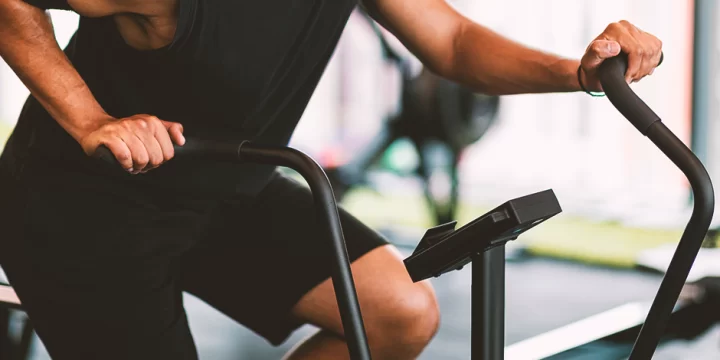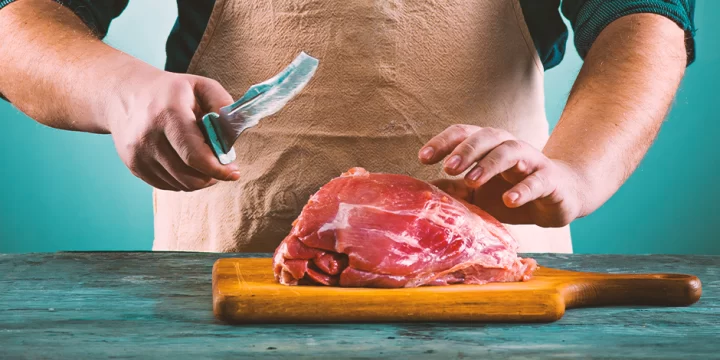Running is one of the best exercises for losing weight, even getting rid of excess belly fat that’s notoriously difficult to melt down. (Or is it?)
Then, how come that surveys show more than one in three US adults are obese?!
Those people probably don’t know some basic minor tweaks that could help them get a flat tummy.
That’s why we’ve researched expert-approved strategies you can easily implement into your running training routine to torch belly fat.
So, let’s get straight to the point.
Quick Summary
- Moderate to high-intensity runs are very effective when it comes to burning belly fat.
- Incorporate running into your exercise routines, eat a healthy diet, and get enough sleep for the best results.
- To burn belly fat while running, you should run for at least 30-60 minutes at a rate of 6 miles per hour.
- In my experience, combining running with mindful eating and stress management is the most effective strategy for sustainable belly fat loss.
Does Running Daily Reduce Belly Fat?

YES, running daily helps reduce belly fat.
Moderate to high-intensity runs beat crunches and sit-ups for belly fat loss. Plus, they're great for your mind too, reducing depression and anxiety symptoms, all thanks to those feel-good endorphins.
High-intensity runs, like sprints or intervals, not only torch more calories than most exercises but keep burning them for 48 hours post-workout, as the Journal of Sports Science reports [1].
Lowers Hunger Hormones
Research from the National Library of Medicine shows that running lowers hunger hormone levels and boosts satiety hormones, making it a top-notch way to burn calories and slim down your belly, diet changes or not [2] [3].
Lowers Risk of Diseases
Pair running with smart eating, and you're on a faster track to losing belly fat, as Obesity Reviews suggests [4]. It's not just about looking good; studies in Physiological Reviews highlight running's role in ditching dangerous visceral fat, and cutting down risks of heart disease, diabetes, and other big health issues [5].
From my experience as a health and performance coach, I've seen high-intensity interval training thrice a week do wonders in melting belly fat and reducing overall body fat, way more than just jogging or walking.
Related Article: Does Cycling Burn Belly Fat?
How to Burn Belly Fat While Running

Many runners mistakenly think more distance equals more belly fat burned. Not quite right. Each running style has its perks. Long runs boost endurance, while slow runs are great for post-intense workout recovery. Regular-paced runs enhance fitness and heart health, but they're not the best for shedding extra fat.
The key? Mix it up! Combine various workouts, speeds, and running styles. This approach not only makes you a better runner but also maximizes calorie burn, crucial for losing belly fat. Keep this in mind as you lace up your running shoes.
Here’s what to keep in mind when you start running to lose belly fat.
Incorporate Interval Running Into Your Exercise Routine

Consider Cross-Training
Cross-training involves running as your primary exercise supplemented by secondary exercises like cycling, swimming, and other low-impact exercises for 30-60 minutes on off days. It has been a game-changer for many of my clients.
Mixing running with resistance or strength training, like intense weight training or core exercises, boosts cardiovascular challenge and fat-burning.
“Building muscle through strength training can help increase your basal metabolic rate, which is how many calories you burn doing day-to-day activities.”
- Carolina Araujo, Certified Personal Trainer
Try Trail Running
Although you can run faster and burn more calories on a flat road, heading onto the trails if you’ve reached a weight loss plateau could be super beneficial.
You may be running at your natural pace, but you’re getting a full-body workout and tightening your calves, quads, and glutes while running up and down hills or jumping over rocks and logs.
Running in different environments, like urban vs. rural or flat vs. hilly terrain, can vary the effectiveness of running for belly fat loss and overall health.
Related: Best Track Workouts for Beginners
Adjust Your Diet

In my coaching, I've seen clients lose a pound weekly by creating a 3500-calorie deficit. This involves a mix of reduced food intake and increased calorie burn.
Running, paired with a healthy, low-calorie diet, speeds up weight loss and belly fat reduction. Key diet changes for optimal results include:
- Cut down on sugar and refined foods. A study in the American Journal of Clinical Nutrition showed that high white bread consumption leads to more belly fat [6].
- Avoid liquid calories like sodas and sweetened drinks. Opt for water instead.
- Include healthy fats from avocados, nuts, and olive oil. These don't necessarily lead to weight gain and can balance blood glucose levels.
- Prioritize protein-rich foods over high-calorie options to build muscle.
- Consider intermittent fasting to regulate insulin and reduce abdominal fat.
- Add fat burner supplements for a thermogenic effect.
However, avoid running on an empty stomach in the morning.
“I recommend clients time their pre-workout meal when exercising for weight loss. If someone is exercising or walking for more than 60 minutes, they need to make sure they eat at least an hour before exercise. If skipping a pre-workout meal, you run the risk of low blood sugar and muscle breakdown.”
- Morgyn Clair, Registered Dietitian Nutritionist
Adopt Lifestyle Changes That Can Help You Get a Flat Stomach

Unfortunately, you might end up sweating without burning fat and reaching your weight loss goals unless you make particular everyday lifestyle changes that can affect your results.
Here’s what matters most:
-
Make Sure You Get Enough Sleep
Aim for 7-8 hours of solid sleep. I've seen clients' weight loss improve with consistent sleep. Science backs this up, linking sleep deprivation to increased cortisol and belly fat. A study published by Science Daily found that women who sleep less than five hours per night gain weight and more visceral fat than those who sleep seven hours or longer [7].
The researchers also associated sleeping longer than recommended with gaining more belly fat.
-
Reduce Stress
High stress equals high cortisol, leading to cravings for fatty, high-calorie comfort foods. This can derail weight loss efforts. My advice? Dodge stress triggers, learn to say no and indulge in relaxing activities.
-
Set Realistic Yet Challenging Goals and Stay Consistent
Realistic, challenging goals are vital. Start small, like cutting out junk food and aiming to lose a pound or two weekly. These mini-goals add up. I've coached clients to lose 10-12 pounds in three months by sticking to such achievable targets. Remember, Rome wasn't built in a day.
FAQs
How Much Should I Run to Burn Fat?
To burn fat, you should run for at least 30 to 60 minutes at a moderate pace of 6 miles per hour (10 km per hour) or a more intense pace four to five times a week.
The faster you run, the more calories and fat you burn.
How Long Does It Take to Lose Belly Fat From Running?
How long it’ll take you to burn belly fat from running depends on your diet, body size and weight, the intensity and type of your running workout, the way your body responds and adapts to your exercise program, how fast and well it recovers, whether you exercise regularly, and a variety of other factors.
Since everyone’s different, there’s no easy, universal answer to this question. It can take weeks or months.
Generally, one pound of fat equals around 3,500 calories. So, to get rid of one pound of fat per week and lose four pounds in one month, you have to burn at least 500 calories every day.
Can I Lose Weight by Running 30 Minutes a Day?
Running for 30 minutes a day can help you lose weight, boost metabolism, and burn 200-500 calories.
Your body uses fat as an energy source instead of carbs during a relatively short period of high-intensity physical activity such as vigorous running, plus up to two days after the activity to restore itself, burning fat due to the increased post-workout oxygen consumption.
Is It Bad to Run Everyday?
It may be bad to run every day because it increases the risk of overuse and stress injuries in your muscles, tendons, and ligaments as your body doesn’t get enough time to rest and repair the tissues.
If you do it right, it’s enough to run three to five days per week and reap all the benefits while keeping your muscles fresh.
Is Sprinting Good for Fat Loss?
Yes, sprinting is good for fat loss. Sprinting boosts an individual's metabolism, helps burn more calories, and helps build muscles. You can sprint for 8 seconds, and it will still help you burn fat.
References:
- https://www.tandfonline.com/doi/full/10.1080/02640410600552064
- https://pubmed.ncbi.nlm.nih.gov/18987287/
- https://pubmed.ncbi.nlm.nih.gov/17347386/
- https://onlinelibrary.wiley.com/doi/abs/10.1111/obr.12406
- https://journals.physiology.org/doi/full/10.1152/physrev.00033.2011
- https://www.ncbi.nlm.nih.gov/pmc/articles/PMC2954448/
- https://www.sciencedaily.com/releases/2006/05/060529082903.htm
About The Author
You May Also Like






